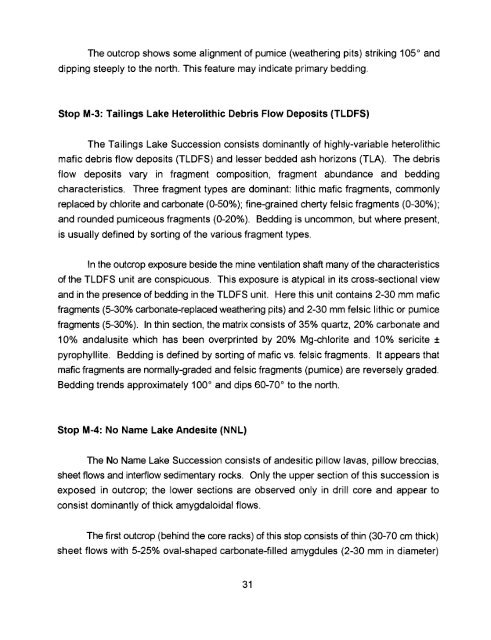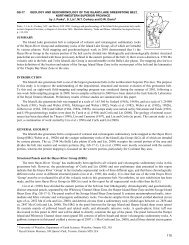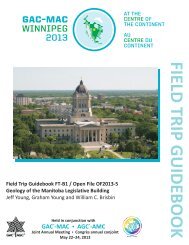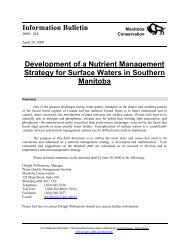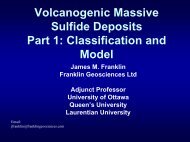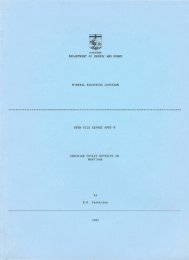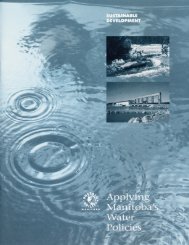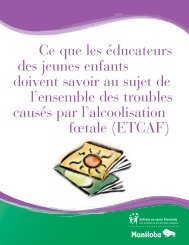Physical Volcanology, Hydrothermal Alteration and Massive ...
Physical Volcanology, Hydrothermal Alteration and Massive ...
Physical Volcanology, Hydrothermal Alteration and Massive ...
Create successful ePaper yourself
Turn your PDF publications into a flip-book with our unique Google optimized e-Paper software.
The outcrop shows some alignment of pumice (weathering pits) striking 105 0dipping steeply to the north. This feature may indicate primary bedding.<strong>and</strong>Stop M-3: Tailings Lake Heterolithic Debris Flow Deposits (TLDFS)The Tailings Lake Succession consists dominantly of highly-variable heterolithicmafic debris flow deposits (TLDFS) <strong>and</strong> lesser bedded ash horizons (TLA). The debrisflow deposits vary in fragment composition, fragment abundance <strong>and</strong> beddingcharacteristics. Three fragment types are dominant: lithic mafic fragments, commonlyreplaced by chlorite <strong>and</strong> carbonate (0-50%); fine-grained cherty felsic fragments (0-30%);<strong>and</strong> rounded pumiceous fragments (0-20%). Bedding is uncommon, but where present,is usually defined by sorting of the various fragment types.In the outcrop exposure beside the mine ventilation shaft many of the characteristicsof the TLDFS unit are conspicuous. This exposure is atypical in its cross-sectional view<strong>and</strong> in the presence of bedding in the TLDFS unit. Here this unit contains 2-30 mm maficfragments (5-30% carbonate-replaced weathering pits) <strong>and</strong> 2-30 mm felsic lithic or pumicefragments (5-30%). In thin section, the matrix consists of 35% quartz, 20% carbonate <strong>and</strong>10% <strong>and</strong>alusite which has been overprinted by 20% Mg-chlorite <strong>and</strong> 10% sericite ±pyrophyllite. Bedding is defined by sorting of mafic vs. felsic fragments. It appears thatmafic fragments are normally-graded <strong>and</strong> felsic fragments (pumice) are reversely graded.Bedding trends approximately 100 0 <strong>and</strong> dips 60-70 0 to the north.Stop M-4: No Name Lake Andesite (NNL)The No Name Lake Succession consists of <strong>and</strong>esitic pillow lavas, pillow breccias,sheet flows <strong>and</strong> interl'low sedimentary rocks. Only the upper section of this succession isexposed in outcrop; the lower sections are observed only in drill core <strong>and</strong> appear toconsist dominantly of thick amygdaloidal flows.The first outcrop (behind the core racks) of this stop consists of thin (30-70 em thick)sheet flows with 5-25% oval-shaped carbonate-filled amygdules (2-30 mm in diameter)31


